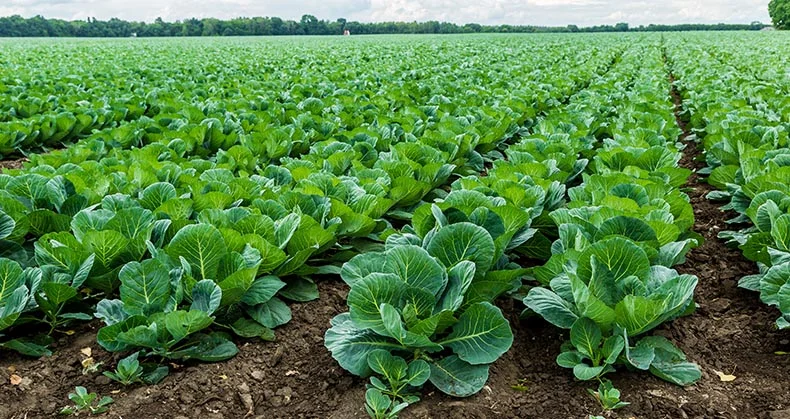Vegetable farming can be a rewarding and profitable venture when carefully planned and managed. Whether you are starting a small garden or a commercial farm, there are critical factors to consider that will influence your productivity, efficiency, and long-term sustainability. The following guidelines outline key elements to keep in mind when setting up and managing a vegetable farm.
1. Crop Selection: Grow What Sells and Thrives
The first step in vegetable farming is selecting the right crops to grow. This decision should be guided by two main factors: market demand and climatic suitability. Conduct thorough market research to understand which vegetables are in high demand locally or regionally. At the same time, ensure the crops you choose can thrive in your specific climatic conditions, including rainfall, temperature, and soil type. Adjust your crop mix as market trends shift and as you learn more about your growing environment.
2. Production System: Open Field vs Protected Farming
Decide early whether your vegetables will be grown in open fields or under a protected system like greenhouses or shade nets. Open field farming is more traditional and cost-effective, but it’s also more vulnerable to pests, weather fluctuations, and diseases. Protected farming offers better environmental control, potentially higher yields, and year-round production, but it requires higher investment and maintenance. Your choice will depend on your budget, goals, and the specific crops you plan to cultivate.
3. Land Layout: Design with the Future in Mind
Once you’ve chosen your crops and farming system, design a functional and efficient layout for your land. This includes the positioning of plots, roads, irrigation lines, drainage systems, and buildings like storage sheds or packing areas. Poor planning at this stage can lead to costly changes later. Mistakes such as placing roads in the wrong area or installing pipelines without future expansion in mind can “cost you an arm and a leg” to fix. A good layout supports smooth workflow, prevents waterlogging, and allows for efficient farm operations.
4. Cropping Plan: Plan Rotations and Successions
Develop a cropping plan early on, including crop rotation and succession planting. Rotating crops helps maintain soil fertility and reduces the risk of pest and disease build-up. Include both short- and long-duration crops in your plan to maximize land use. Carefully schedule planting and harvesting times to ensure a continuous supply of produce, taking advantage of off-season opportunities if possible.
5. Land Preparation: Factor in Costs and Suitability
Proper land preparation is vital for healthy crops. This includes clearing, tilling, ploughing, and leveling the land. Some soils may also require amendment with lime, compost, or fertilizers. Budget for these activities ahead of time, especially if your land is bushy or has not been farmed before.
6. Labour Planning: Don’t Underestimate Manual Needs
Vegetable farming is often labour-intensive, particularly during planting, weeding, irrigation, and harvesting. Evaluate your labour needs early and plan accordingly. Will you rely on family labour, hire seasonal workers, or employ full-time staff? Having the right number of trained workers at the right time can significantly affect your success.
7. Fencing and Windbreaks: Protect Your Investment
Depending on your location, fencing might be necessary to keep out animals or unauthorized people. Choose the type of fence—barbed wire, live fence, or mesh—based on your budget and security needs. In windy areas, windbreaks such as planted trees or hedges help protect crops from wind damage and reduce evaporation. Plan their placement carefully so they don’t cast too much shade on your crops.
8. Composting: Turn Waste into Wealth
A compost area is an essential part of a vegetable farm. Compost heaps or pits provide a place to dispose of organic waste and create nutrient-rich material for soil improvement. Ideally, the compost site should be located close to the nursery but in a less productive section of the land. Use it to recycle crop residues, animal manure, and kitchen waste into valuable organic matter that enhances soil health and fertility.
9. Nursery Area: Where Life Begins
Vegetable farming often begins in a nursery, where seeds are germinated before transplanting. Choose a lightly shaded area or build a lath house to protect delicate seedlings from harsh sun and heavy rain. The nursery should occupy about 2% of the total farm area. Decide whether you’ll use seedbeds or containers like seed trays or pots. For seedbeds, select the most suitable type—raised, flat, or sunken—depending on your soil and climatic conditions. Proper nursery management leads to stronger, more resilient seedlings.
10. Irrigation Planning: Ensure a Reliable Water Supply
Water is life in vegetable farming, especially in dry seasons. Assess whether irrigation will be required and identify a reliable water source such as a borehole, river, dam, or water tank. Choose a distribution method that suits your crops and scale of production. Options include drip irrigation for water efficiency, sprinklers for uniform coverage, or furrow irrigation for larger open-field farms. A well-designed irrigation system reduces water waste and improves crop yields.
Conclusion: Thoughtful Planning Leads to Productive Farming
Vegetable farming offers excellent opportunities, but it requires thoughtful planning and attention to detail. From selecting crops and planning your layout to setting up irrigation and managing labour, each step plays a role in your farm’s overall success. By following these guidelines and adapting them to your specific context, you can create a productive, efficient, and profitable vegetable farm that meets market needs and ensures long-term sustainability.


